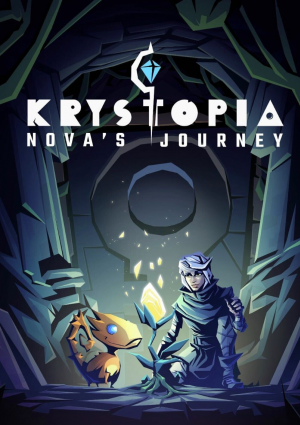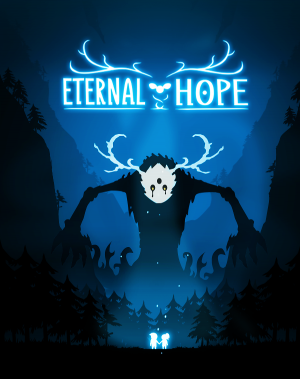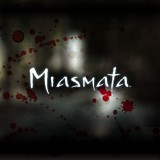Review for The Girl of Glass: A Summer Bird’s Tale
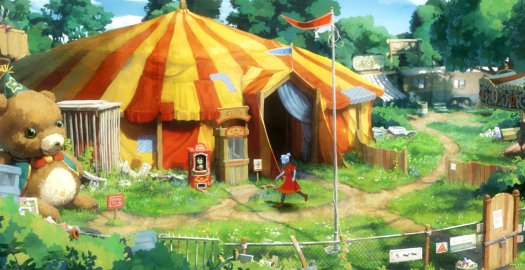
Sometimes artists find that the stories they wish to tell are too big or complex to be constrained to just one mode of expression. One strategy for navigating this dilemma is to blend various styles together into a mold that subverts easy categorization. Independent developer Markus Oljemark has chosen just such an approach for The Girl of Glass: A Summer Bird’s Tale. Crafting a work that alternates evenly between segments of traditional point-and-click adventure and turn-based RPG combat, this genre hybrid is an artful execution of two types of gameplay worthy of Broken Sword and Final Fantasy comparisons alike. With near-equal weight given to both aspects, including a potentially significant challenge during the combat-intensive portions, any recommendation must come with a substantial caveat for fans of one and not the other. But those who cherish both adventure and roleplaying will find The Girl of Glass a wonderful experience with beautiful art and music, a captivating world, a strong narrative, and highly engaging gameplay.
You play as Kristal, the titular girl of glass, a teenage orphan working as a servant for a traveling circus. Kristal's boss and co-workers make up a colorful band of misfits who, for their own reasons, have been shunned or neglected by the world around them. As if that didn't already offer plenty of material for a compelling adventure, the action takes place amidst a fascist government dictated by an omniscient figure only ever seen in glimpses and referred to simply as the Eagle. Rather than imposing his will on the world directly, the Eagle hands off his duties to other characters who represent different expressions of authority: first a sheriff, then a businessman, and finally a priest. As the story progresses, it builds into an intriguing exploration of trauma as well as a surface-level but effective critique of capitalism and its authoritarian possibilities.
Aside from Kristal, no one else is given a name at the outset. The Eagle’s antagonists are referred to only by title/description, while Kristal's colleagues are known by their roles in the circus: the ringmaster, the bear woman, Strong Girl, the tall lady, and the clown. You get to decide their personalities and dynamic with Kristal, which are largely determined by her recollections of them while looking at photographs in a brief introductory segment. For example, when asked about the ringmaster, you can choose “I guess he just wanted a friend,” “What he wanted was to be taken seriously,” or “The only thing he cared about was running the circus.” I opted for the first, and in my playthrough he compromised his sense of professionalism by trying a little bit too hard to win my friendship. This element of choice continues throughout in small ways—a welcome feature that enhances the experience.
Among the tasks to be handled is that of assisting Kristal's boss and her fellow circus employees in coming to terms with themselves and their circumstances. The specific details here are best left to discover for yourself, but I will say that unpacking the tragedy of these characters introduces profound themes such as homophobia, war desertion, depression, and loneliness. As with its critique of capitalism, the game doesn't dip too far beneath the surface in exploring these themes, but it does so enough to lend its cast a fair amount of poignancy.
Another integral character is a teenage boy who arrives at the start of the game and invites Kristal to run away with him. While he is initially a symbol of escape to Kristal—a chance for her to leave behind her pastoral life for something greater—as the story progresses her romanticized image of him crumbles, revealing someone with a capacity for ignorance and insensitivity. But the narrative is not entirely unkind to the boy, as much like Kristal's circus companions, he too carries a trauma that is revealed piece by piece throughout. He also functions ostensibly as a hint guide, but ask him for help and Kristal will figure it out on her own before he can answer, verbalizing the puzzle's complete solution in the process. A subtler, more tiered approach with actual hints would have been preferred, but it’s still a nice touch in that it ties in with the game's themes—the boy falls short of Kristal’s expectations, and she doesn’t need him the way she thinks she does.
As endearing and relatable as the supporting characters are, it would mean little without a strong protagonist. Fortunately, the most interesting member of the cast—as well as the one treated with the most depth—is Kristal herself. Kristal is an orphan who cannot read or write. She is mostly fond of her co-workers but feels stifled at the circus—trapped in a life in which she has little agency or identity. That she is literally a girl of glass is neither explained nor emphasized aside from a few key moments, but it makes for a distinctive visual element and ensures that a sense of fantasy is always maintained even when at its most understated. It also functions as an earnest metaphor for the fragile protagonist’s shyness and uncertainty at the start of the game, though as the plot moves forward, she will begin to experience an empowering awakening.
As her growth is increasingly actualized, we see the inner workings of Kristal’s mind and gain access to its chaos and conflict through a series of fierce dream sequences that overlap with reality in a way that is sometimes ambiguous. These dreams play another crucial role in the storytelling of The Girl of Glass by functioning as the mechanism through which it switches between a traditional adventure and a combat RPG. Generally speaking, the fighting takes place within dreams in which Kristal and company are depicted as supernatural beings traversing a fantastical dystopia, engaging in battle with threatening figures resembling the various antagonists of the waking realm. A small amount of fighting is present in the adventure sections as well, which I found to be effective in smoothing out the edges between the transitions. It does warrant a bit of a warning, though, as players may come to expect just a little light combat only to suddenly feel like they are playing a very different game after the first chapter.
Not only is there a lot going on in the internal lives of these characters, so too does the story develop into something rather bigger than it seems initially. The game is divided into seven chapters, with an alternating pattern between those mostly set in Kristal’s dream world and those that mostly take place when she is awake. The first chapter establishes the basic premise, starting off with the boy approaching Kristal, pleading for her to come away with him. Kristal is hesitant at first, but ultimately agrees to do so—motivated in part by a corrupt sheriff who seems to have taken a personal grudge against the ringmaster and is threatening to shut down the circus.
Kristal and the boy hatch an escape plan, but in the process of carrying out their illegal scheme, Kristal starts to have second thoughts. Eventually, however, circumstances conspire to bring misfortune on the other circus workers, which forces her to flee after all. Once on the run from the law, Kristal begins to have dreams in which she assumes magical powers and embarks to destroy the Eagle’s oppressive system. Her heartache and guilt also create manifestations of her co-workers, who first confront her as antagonists—angry under the mistaken impression of her treachery—but then later as allies. Meanwhile, in the conscious world, Kristal and the boy run into complications that lead them to the orphanage where Kristal was raised. There she stumbles upon a conspiracy, all the while growing more suspicious of her traveling companion.
What gives the story its complexity is the added dimension of the dream world, placing roughly as much emphasis there as on Kristal’s conscious experience. Such a duality warranted not only the blending of gameplay styles, but also a fairly liberal range of narrative influences Oljemark saw fit to draw from in bringing this story to life. Imagine Hayao Miyazaki and Walt Disney teaming up to make an animated film adapted from Federico Fellini's La Strada, then deciding it was an adventure game—and then deciding it needed turn-based RPG dream sequences and handing these off to Katsuhiro Otomo (Akira) to direct. With such a wide breadth of inspirations, The Girl of Glass could easily have amounted to an incomprehensible mess, but I found that the developer's experiment paid off in a big way, making the game feel like a multifaceted, ambitious work worthy of several hours of devotion.
As much as I admired this approach, it probably wouldn't have worked as well if not for some truly astounding art and music bringing it all into focus. Fluidly animated hand-painted art makes each and every moment feel like a scene from a lost film. The assorted environments—from the circus to a small town adorned with fascist statues of devotion to the Eagle—work to build a world that feels rich, detailed, and immersive. And between the comforting colors and warmth of Kristal's conscious surroundings and the apocalyptic revision of these same locations in her nightmares, there is an abundance of material to captivate the imagination.
Further reinforcing this impression is a finely composed and fully orchestrated score that sets the mood masterfully. It does just as well in creating a sense of magic and wonder as it does in signifying impending doom, taking a sinister turn whenever the Eagle is mentioned. The battle music is appropriately intense, pumping you up for a good fight. And though the in-game characters are not voiced, a narrator provides excellent exposition throughout, playing the role of both omniscient observer and Kristal's subconscious, which aids in fleshing out the drama and comedy alike.
In this day and age, it is reasonable to suspect that a game heavy on narrative will be lacking when it comes to gameplay. Fortunately, that is not the case with The Girl of Glass. It’s mostly what you would expect in the adventure game segments, which feature a straightforward point-and-click interface. Hotspots, including items you can interact with and places that lead to a new area of the map, are highlighted when you hover the mouse over them. Gameplay is mostly driven by conversation and puzzles that require you to collect the right objects and combine them in a way that will help you to overcome an obstacle.
Dialogue is mostly used to find certain items or to trigger in-game events that will move the story forward, but you will also, at points, use it to help the other characters sort through the traumatic events that led them to their present circumstances. In both cases the stakes are low, as saying the wrong thing will simply end the dialogue tree and require you to engage in it again until you find the right words. In this sense, The Girl of Glass is a pretty linear experience, and in spite of the choice you make in the introduction that determines your relationships with others, after that point these relationships evolve according to a predetermined narrative. However, for those willing to go the extra mile, there are a few optional achievements to be completed that involve a modicum of conversational persistence and lead to a feeling of even deeper connection with other characters.
There's no shortage of puzzles here, nor many that “solve themselves.” There are many necessary items to find, and they will often need to be combined with each other or objects in the game’s environment. Puzzles aren’t exclusively inventory-based, however, as you’ll find a variety of fun tasks scattered throughout, including logic puzzles, a scavenger hunt, and a game of chopsticks.
The challenge starts off fairly straightforward but requires greater intuition as you progress. For example, early on you need to obtain something the clown is juggling. He mentions that he is hungry, so you need to find a way to deliver him some food. This contrasts with a later puzzle, in which a young mute girl outside the orphanage where Kristal grew up is sad that her stuffed bunny has become stuck on a portion of the rooftop that is difficult to access. Here there are not as many clear-cut clues, but the solution comes together in a way that feels natural yet also requires both logic and a commitment to experimentation and exploring all aspects of the environment. This is true of most of the puzzles in The Girl of Glass, especially as the game progresses.
The RPG sections offer a very different experience. Strikingly, in these portions of the game you do not explore a map between battles, so the entirety of the gameplay exists within the combat system, with fights punctuated by still image cutscenes advancing the story. Like the adventure segments, these parts of the game follow their respective conventions fairly closely, though the experience is compressed to the bare essentials of turn-based combat without the stats and leveling system that is the hallmark of the roleplaying genre.
You control a group of up to four characters (the fantastical interpretations of Kristal and her co-workers as she is dreaming) who face off in battle against another party of opponents. Usually in RPGs, each individual character will have health points (HP) of their own, and you reach a game-over when every party member's HP runs out. Here, however, there is a pool of HP that the entire party shares. Your party will perform the actions you select for each individual member, taking turns with those carried out by your opponents. You can choose to attack, guard, or focus, the latter forsaking any action this turn but allowing two actions in the next turn. You can also use your turn to move your characters to a different arrangement in the party's formation—helpful for evading attacks that are strong against a particular character. As the game progresses, your characters will automatically learn unique abilities that can enhance attacks, guards, or focuses, and these will open up as new options for selection.
Adding a degree of complexity, each character possesses a particular type of elemental affinity. The main strategic challenge in combat involves utilizing various elemental attacks to maximize damage against opponents and minimize it against your party. In short, certain elemental attacks are strong against certain opponents, and vice versa. Elemental orientations are visually apparent for each character, and particular affinities are figured into attacks automatically. To give an example, Kristal's source of power is lightning, which means her attacks are strong against water-themed opponents but weak against those who use fire. A twist to this formula is that certain abilities will move characters into different arrangements, so that just when you think your party is organized optimally, on the next turn it won't be.
At the beginning of the first combat-heavy section, you are presented with three difficulty settings that apply only to these battle-intensive parts of the game. While the various options are welcome, the challenge level can only be altered once after the original is put into effect. This limitation warrants significant caution, as the hardest setting is no joke. Being a prideful player, I committed to the greatest challenge, and even having grown up on RPGs as much as I did adventure games, I struggled the entire way. However, much to the credit of Oljemark, the challenge never feels random but always earned, and finally arriving at a perfect strategy for victory after several failed attempts is an incredibly rewarding feeling. Health automatically resets itself between confrontations, and reaching a game-over only sends you back to the start of the same battle. So while the challenge is steep on the most difficult setting, the game is fairly forgiving of failure.
While for the most part the adventure segments are distinct from those with RPG-style combat, there are some rather compelling and creative ways the two genres bleed into one another. There are flashes of turn-based battle in Kristal's waking moments, but they are considerably more grounded in reality than the fantastical violence of her dreams. For example, early on you must use a broom to chase away a cat. And since a cat is not any match at all for a girl with a broom, you do this pretty easily. The difficulty doesn't ever get too much more challenging than that.
More interesting are the small ways the game incorporates aspects of adventuring into the combat portions. Throughout her dreams, Kristal often attempts to reason with the otherworldly beings her subconscious mind has summoned. For instance, her circus companions are first presented in these segments as antagonists angry with Kristal, and a good portion of these earliest “battles” require you not to fight but to navigate dialogue trees to find the right words to convince them to talk things out. Conversation is also integrated to varying degrees into the battles you must wage against the supernatural embodiment of the Eagle’s enforcers, and as the game develops these moments become deeper and more complex, to the extent that—at least when playing on the hardest setting—paying close attention to what’s being said is integral to your survival. This kind of interplay ensures that The Girl of Glass is never entirely adventure game or RPG but a distinct creation that incorporates a little bit of both at all times.
And that really is the bottom line: Those approaching The Girl of Glass: A Summer Bird's Tale from a purist’s perspective on either genre will be sorely disappointed, but those open to its idiosyncratic ambitions will find it deeply rewarding. In so boldly fusing traditional adventure with turn-based RPG combat, this game will only be suited to players with at least an openness to both types of gameplay. But with the correct expectations going in (and a difficulty setting that matches your ability), you’ll be free to enjoy what a lot of great art does best—that is, experimenting, reimagining, and creating something unique. With exemplary art and music, as well as a strong narrative, this game offers plenty to intrigue and captivate, rewarding players with a satisfying feeling of accomplishment and a truly memorable experience.


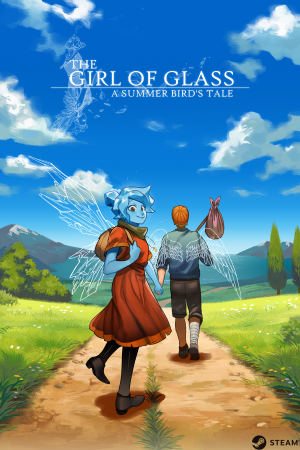


__large.png)


__large.png)
__large.png)
__large.png)


